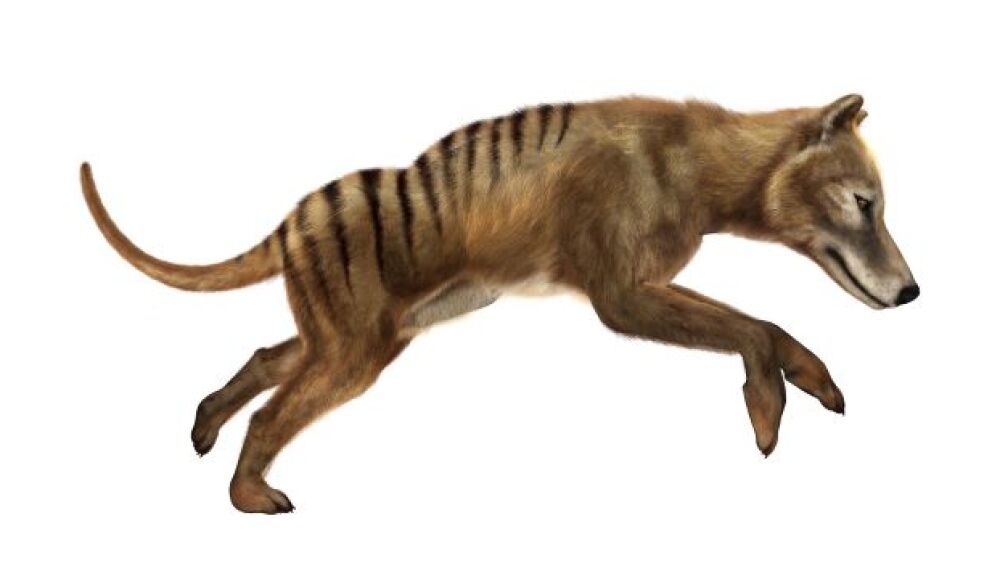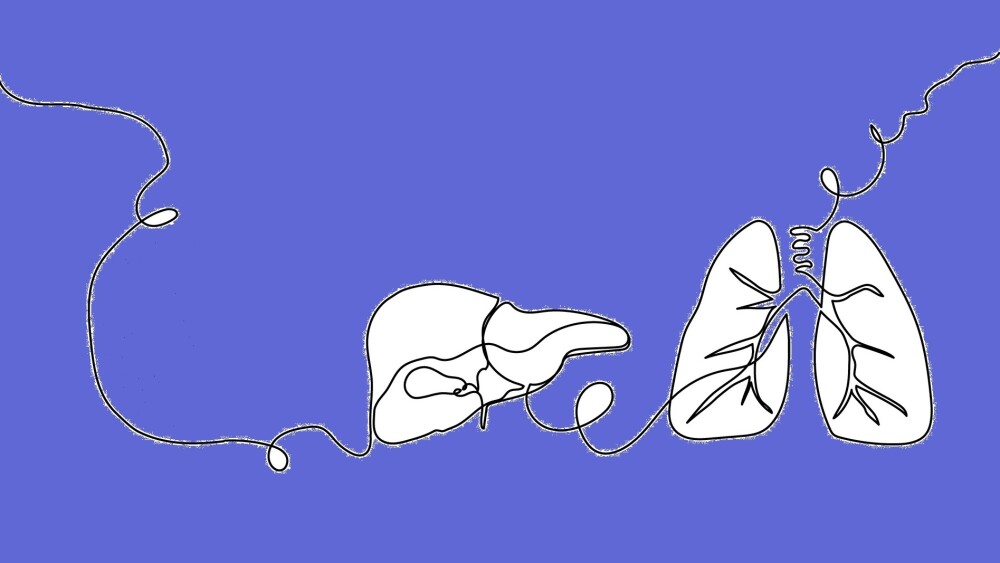Working to undo the sins of the past, Colossal Biosciences and the University of Melbourne are attempting to bring back the Tasmanian tiger in a project that could have big implications for human health.
The Thylacine_courtesy Vac1/Getty Images
Colossal Biosciences has partnered with the University of Melbourne to bring back the thylacine, commonly referred to as the Tasmanian tiger or wolf.
Ben Lamm, co-founder and CEO of the genetic engineering company, told BioSpace it has made a priority of partnering with universities who have expert knowledge of the species. Colossal has also partnered with Harvard to bring back the wooly mammoth.
“There’s no one better in the world on the thylacine than Andrew Pask,” Lamm said, referring to the epigeneticist and head of the University of Melbourne’s Thylacine Integrated Genomic Restoration Research Lab (TIGRR Lab).
Lamm believes the de-extinction approach has three notable benefits. Bringing back the thylacine could result in ecosystem restoration; the developed technologies may be beneficial to healthcare for humans; and eventually, Colossal hopes to subsidize technologies built particularly for conservation and give them to conservation groups for free.
“I think the benefits are pretty large because we’re undoing the sins of the past,” he said.
In terms of human healthcare, the company is “building a slew of technologies across software, wetware and hardware that we think can be massively impactful for human genomics, protein engineering and editing,” Lamm noted.
Colossal is also developing its own software and custom pipelines to advance protein engineering efforts.
Simultaneously, the company is working to advance multiplex editing technologies in order to “deliver bigger blocks of synthesized DNA.” Lamm said the same technology used to de-extinct the thylacine or turn an Asian elephant into a mammoth can also be applied to treating multi-gene disease states in humans.
One piece of hardware is early and late-stage artificial wombs. “We’re pushing the bounds of IVF right now in species that are actually much harder to gestate than humans, like elephants,” he shared.
The Thylacine
Dr. Brandon Menzies, research associate at the TIGRR lab, described the thylacine as a major apex predator that evolved on the Australian continent and eventually became isolated to Tasmania. When a bounty was placed on the animal’s head in the late 19th century, thousands of thylacines were killed.
“After that period, no more were seen in the wild - possibly one more - and the last one that existed in a zoo died in 1936,” he told BioSpace.
Because the creature was eliminated due to hunting, there’s still a niche that makes it a good candidate for de-extinction, said Dr. Stephen Frankenberg, a research fellow at the TIGRR lab.
“There’s a lack of an apex predator now in Tasmania, so it will fit quite nicely back into it. It’s also a good candidate because we can assemble a fairly complete genome from museum specimens that have been preserved, which is obviously not possible for a lot of species that have been extinct for much longer,” he added.
Frankenberg noted that whereas other marsupials have closely related species, “the thylacine is on its own to a degree in the evolutionary tree.” There’s an argument to be made for future conservation, he said, where one species from each taxonomic group is preserved to better maintain representatives on all ends of the evolutionary spectrum.
Bringing the thylacine back could positively contribute to ecosystem health as well as biodiversity in Australia.
“There’s a need for an apex predator,” Frankenberg said, likening the situation to the reintroduction of wolves in Yellowstone National Park. “It’s likely that the thylacine would be a benefit in keeping down the numbers of large herbivores.”
Though there isn’t much knowledge on the specifics of the ecosystem before the thylacine was exterminated, Frankenberg added that “on theoretical grounds, we would expect that it would be healthier because it would be back to its more natural state.”
The De-Extinction Process
The Colossal and TIGRR lab teams plan to utilize stem cells from the fat-tailed dunnart, a small rodent-like marsupial, then use CRISPR editing to change the genome into a thylacine genome.
“The next challenge is to produce an animal from those stem cells,” Frankenberg said. The lab team will focus on the reproductive biology side, working on technology to turn the marsupial stem cells into an animal.
He added that where growing laboratory mice from stem cells is routine, not much work has been done in the area of marsupials. Colossal will focus more on the CRISPR editing side, though both teams will work together overall.
Frankenberg called the funding an exciting opportunity, as it “opens up so many doors to possibilities regarding the volume of the research that we’ll be able to produce.”
Many technologies that benefit wider marsupial conservation will now be available to the lab.
“We’ll be able to biobank genetic diversity from threatened species and preserve cells from individuals that can then be thawed out in future years to restore genetic diversity if those threatened species get to the brink of extinction or even go extinct,” Frankenberg said.
CRISPR gene editing can also be applied to conservation issues. The TIGRR lab is working on a proof of principle project with the northern quoll, a species in Northern Australia also referred to as the northern native cat. The animal is threatened due to a toxic invasive species of cane toads.
The lab plans to use the technologies developed for the thylacine project to do a much smaller amount of CRISPR edits to a northern quoll genome, mimicking the natural toxin resistance developed by the cane toad’s predators in South and Central America. The team plans to produce an animal that will be bred in captivity, then released into the wild to spread the resistant gene.
The scientific area is broad, and many different elements are being brought together on this project, Menzies noted.
Though it can seem unrealistic to some, “these are all areas that are either established or rapidly, rapidly evolving,” he said. “Colossal is really at the forefront of the genome-style edits that can be made to DNA.”
Lamm likened thylacine lore to that of a UFO or Bigfoot, highlighting excitement from the public over blurry photos and alleged sightings.
“It’s become this kind of cultural thing where people are really excited about it, and almost believe they still see them,” he said. “It’s a really great candidate for de-extinction.”





